Seldom is it that one uses a camera older than one is oneself, particularly if one is into one’s eighties. But fifty years ago I bought, untested, a Leica Model A from a local camera shop for twelve pounds.
This was the first Leica that was mass-marketed, and mine was sold by James Sinclair in Charing Cross Road. Sinclair’s was a well-regarded dealer and manufacturer of cameras; indeed, the firm supplied the equipment taken by Scott to the Antarctic.
My acquisition bore the serial number 11581, dating it to 1928. Leitz had not then adopted interchangeable lenses, so the 50mm Elmar f/3.5 was permanently fixed to the body and was close focusing to less than two feet!
If one wanted a rangefinder, it could be put into the accessory shoe – they were not built-in. But I am used to zone focusing. Neither of course was a meter built-in, but after 70 years of photography, one begins to know one’s light. It is very compact as the lens collapses into the body, and weighs 414 grams.
Back in 1963…
My younger son, born in 1963, learned photography on it, loaded with black and white film, running around Morocco on holiday with it, making friends with a snake charmer! I, by comparison, was using a Leica M3 loaded with Kodachrome.
Before long, Barry was upgraded to a more modern 35mm camera, and the Leica A went into retirement. However, I kept it.
Two years ago, I tried to load it, and it clearly needed attention. Not every technician has experience of equipment of this age and I was loath to submit it to inexperienced hands.
After some research, and a look at Ken Rockwell’s site, I thought that while I live in London, Gus Lazzari in North Carolina, might be the guy. I emailed him with a photo to ask if he thought a service would be a good idea.
He replied, “because you essentially now own the Ferrari of cameras, your camera requires maintenance, at the least every 15 to 20 years, along with knowledge of how to store it properly.
“Just like redlining a 40-year-old Ferrari found in a barn; this after you put fuel and a new battery in it, It’s certainly not prudent to run a bunch of OLD acidic oil & grease thru precision and polished surfaces.
“So don’t currently force more cycles than necessary out of your Leica body & lens prior to servicing.”
Abject failure
I took this as a “yes” and sent it off to him. His report was disheartening.
“Tampered with, causing major tool marking & deformed retainers (close focus stop pin, VF eyepiece bezel, screws, etc).
“Lubricant failure, causing dry transport feel and full-range shutter inaccuracy. Shutter curtain material is somewhat age-hardened but is currently light-tight.
“VF elements have fog/haze/debris. Knobs, base & top plate have multiple abrasions & blemishes. Poorly executed ‘paint job’ from past repair attempts.
“Rewind knob has a wobble, sustained from a past impact. Original body covering (vulcanite) in fair condition & functioning as designed. 50mm Separation ‘stars’ & spots inside lens group. Focus helical threads dry of proper lubricant. Front of lens bezel has an impact blemish.”
In for a penny, in for a pound, though I. Gus has a long queue, but I could hardly say it was a rush job. Two years later it came back looking and feeling substantially better.
I loaded a film, finished it, and tried to rewind. That proved impossible, as the film tore through all its perforations. Gus patiently explained to me that with a Leica of this age, when rewinding it was necessary to depress the shutter release. He cleaned out the guts of the camera again and returned it promptly, having film tested it.
Second time lucky
So I had a second go. This time, knowing the trick, I rewound it easily and developed the film. I placed my Valloy II on the kitchen countertop, filled the dishes, and began printing.
After looking with surprise at the proof five by sevens, I pushed up the enlarger head and printed ten by eights of a demonstration outside Downing Street, arguing against Iran, lockdown, vaccination, and whatever. I could read even the small print on the placards.
Using TMax400, and with an uncoated lens nearly 100 years old, and with flaws that Gus could not remedy that engenders a certain amount of flair, this seems not too bad! The doughnuts photo was at f/4.5, and the others at f/9. The Elmar uses old-style numberings.
Perhaps I should stick with a Barnack. Leica Ms are just too modern for me.
Read more on Geoffrey’s Barnack leica
Make a donation to help with our running costs
Did you know that Macfilos is run by five photography enthusiasts based in the UK, USA and Europe? We cover all the substantial costs of running the site, and we do not carry advertising because it spoils readers’ enjoyment. Every amount, however small, will be appreciated, and we will write to acknowledge your generosity.

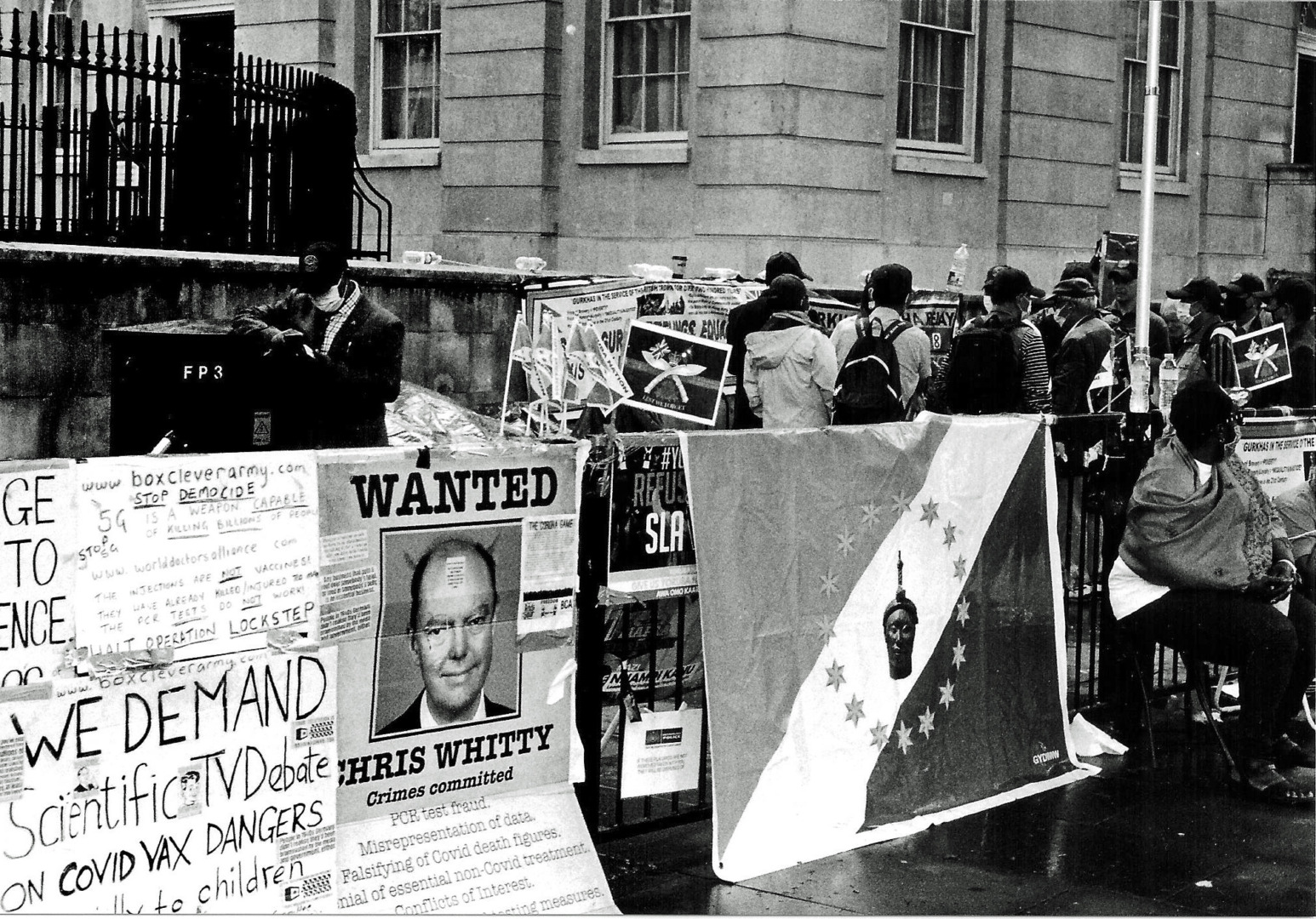
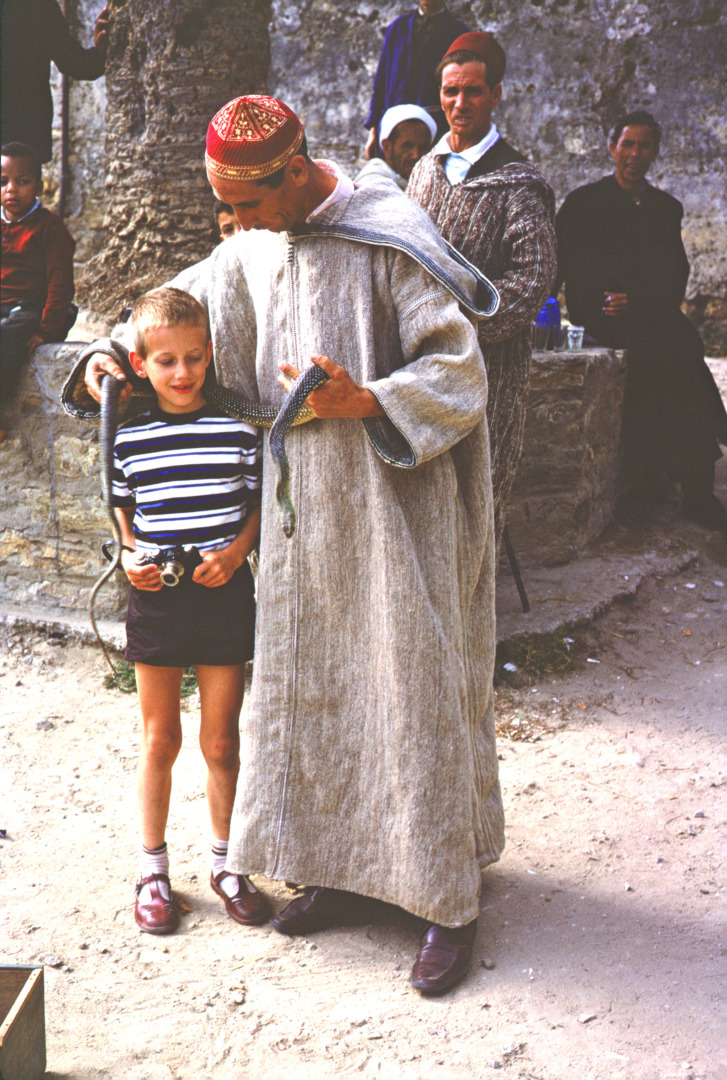
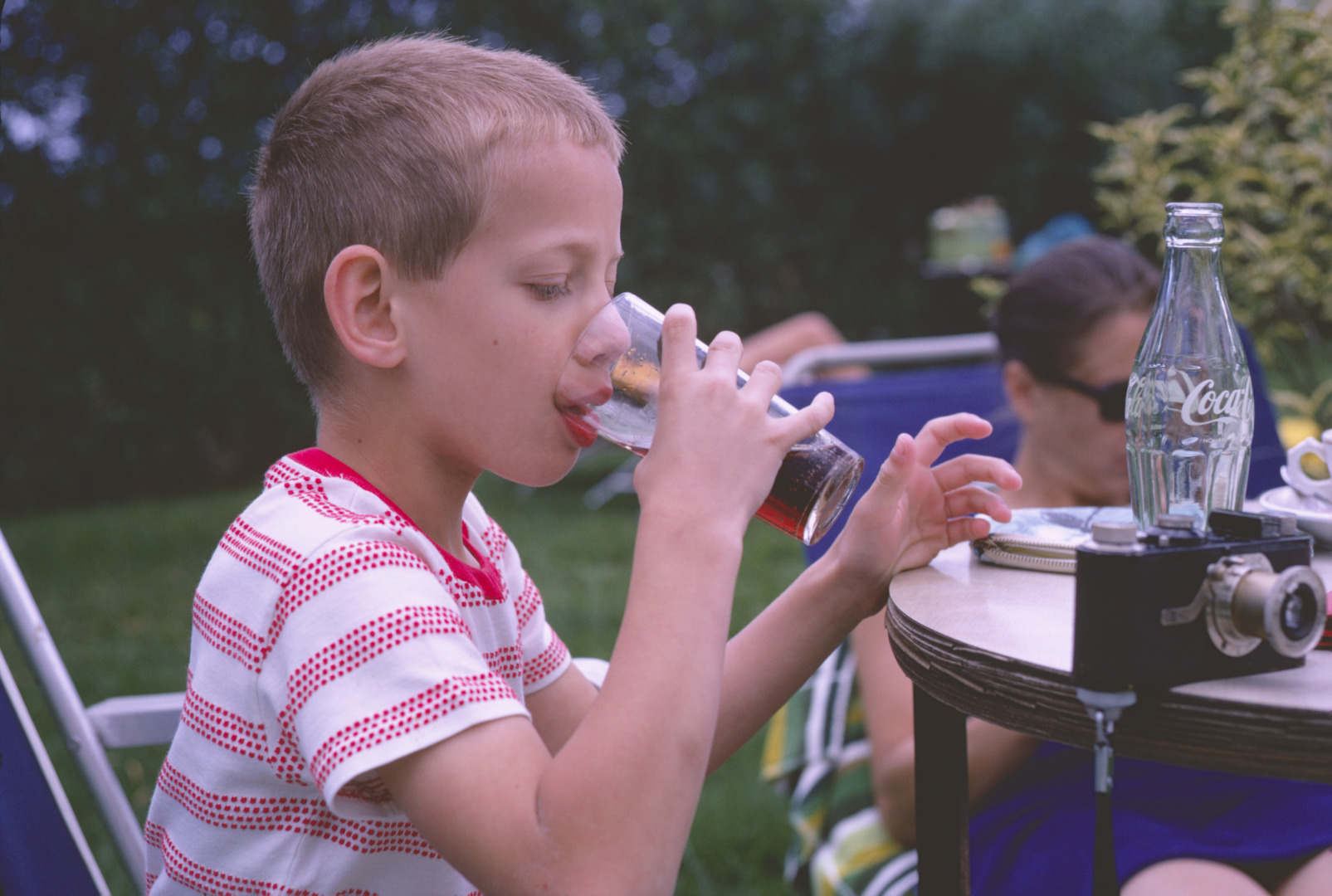
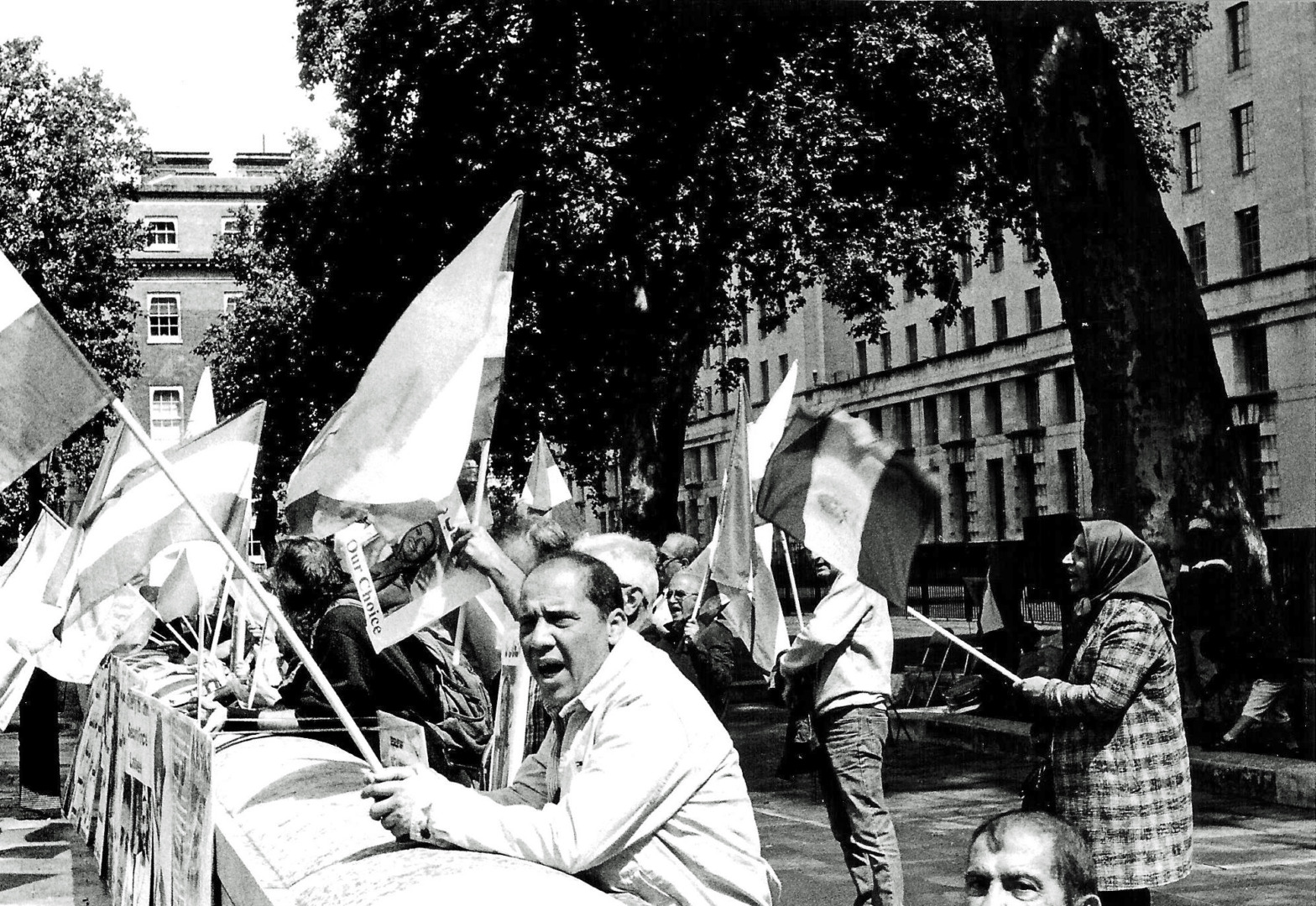
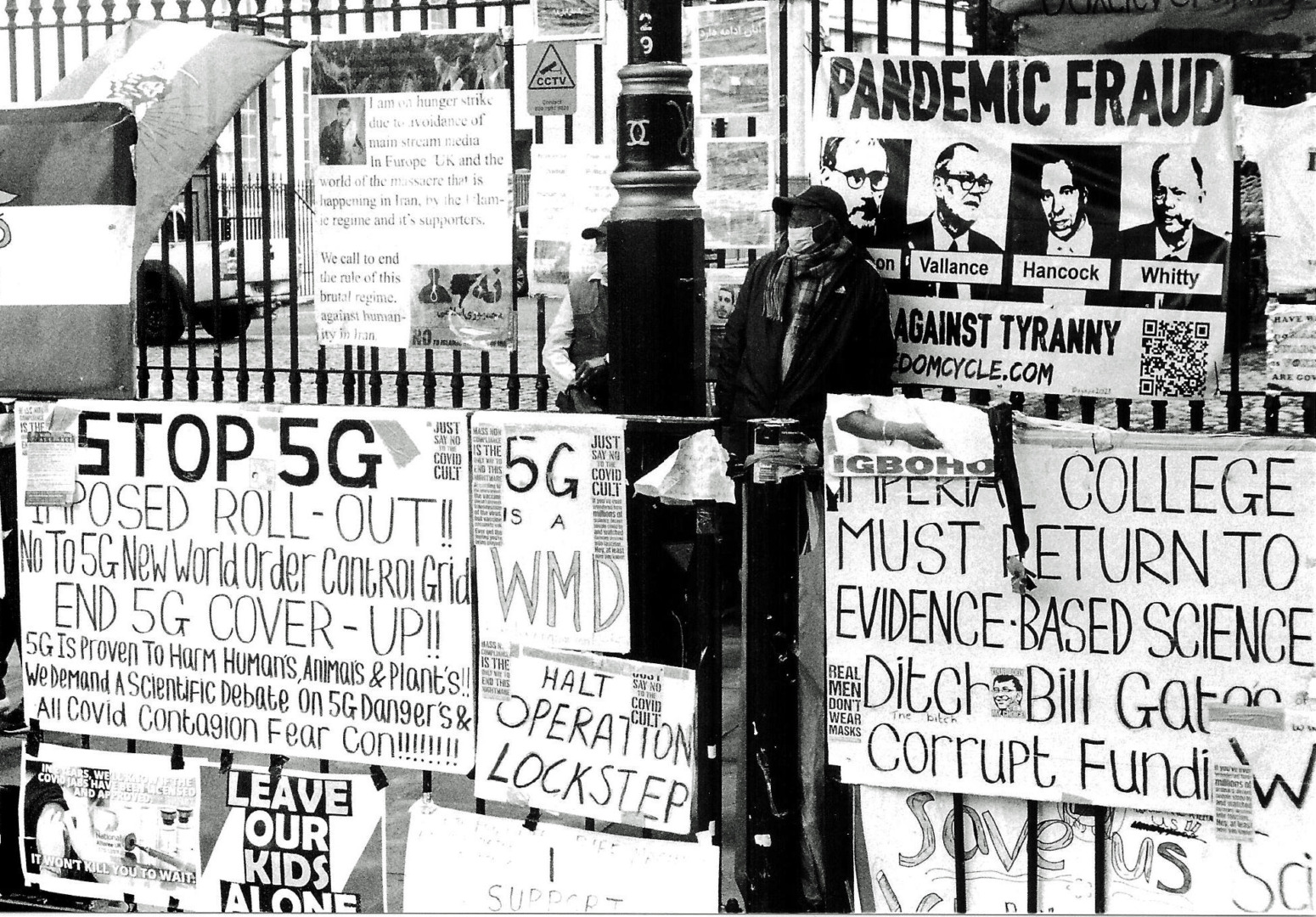
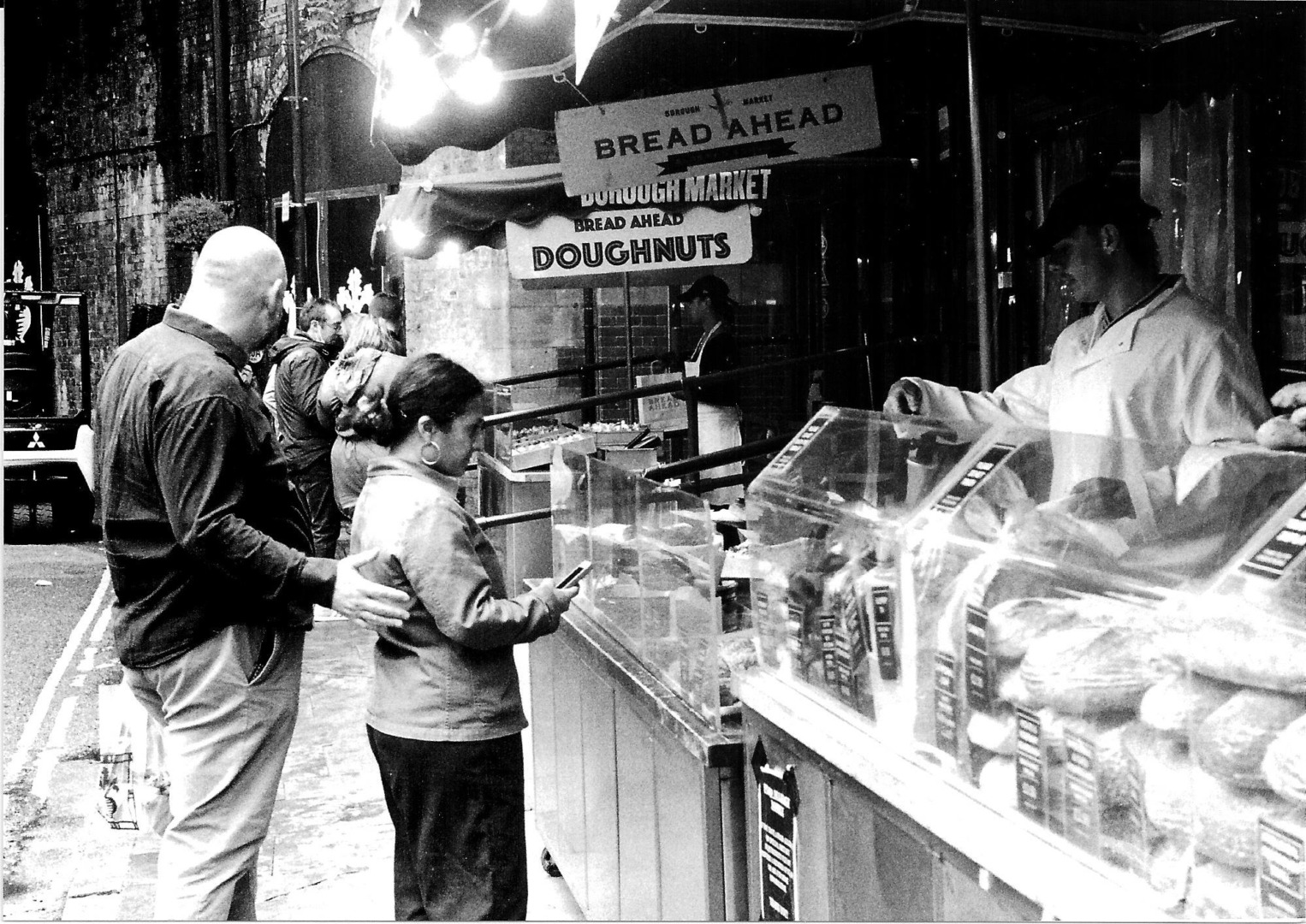
Quite children grow old faster than Leica. Circa 1970!
A smile brought to many faces with this article Geoffrey. Ah, the foibles of loading then removing film! How such tribulations are forgotten amid the ease of popping SD cards into and out of their dual slots. Even compressed for the blog the beautiful ambience of these film shots is obvious
A fascinating and very enjoyable story – thank you. One small point: if Barry was born in 1963, the photo of him drinking with the Leica on the table beside him can’t have been taken in 1963 – maybe around 1970?
This could have been my fault in writing the caption. Geoffrey will adjudicate!
The prints were five by sevens from my Valley 2, with an elNikkor f 2.8 lens, scanned in a cheap scanner. I don’t like hybrid work and luckily Ilford still make grade 2 paper.
One needs an enlarger and lens of a precision equal to the Leica and the Condenser on the Valloy sits on the negative and is treated to avoid Newton rings.
.
I, too, sent a camera – and three lenses – to Gus a few years ago: an early M3, and a 35mm, 50mm and 90mm lens.
The 50mm was in poor shape – that 1954 front glass was, supposedly, moisture absorbent, and had crazed and cracked and looked scoured over with a pan scrub! So I asked for the front to be polished and coated, and the other lenses to be cleaned and have any haze removed.
After 6 months – was it? – everything came back pristine! But when I then sent Gus a Barnack (IIIa or IIIc, I think) he put in new shutter curtains ..but the slow speeds went wrong just a while after I had it back; he’d also re-covered it – which I didn’t ask for and didn’t want – but the new covering was inaccurately cut and has a gap at the top ..and the cherry on the top was a black felt-tip circle in the middle of one of the finder windows! When I asked “how come?” he said he thought that the finder needed it, to give a contrastier view. Grrrrr. Ugly.
So I haven’t been back to Gus. But the M3’s great ..and smooth as butter.
The odd thing here, though, is how washed out your Kodachromes look; they can’t be like that in real life! ..But the TMax photos look terrific (..I’ve just scanned that QR code and my phone’s gone straight to the website! Sharp? ..I’ve seen nothing sharper!)
Lovely story, and I’m so glad that your Barnack came back better than mine!
Wonderful article and images. My oldest Leica was a CL. The more time passes the more I want to return to film vut the X2 is so handy …
Thanks for sharing
Jean
Dear William
Barry is a better photographer than I – perhaps that is because he started with a Leica. He now has a portfolio career as it is called, part computer support particularly of financial scanning software, and part photography where he acts as a local stringer for papers not wising to send people to the town where he lives, and for local events. Where I will spend a couple of hundred on a lens, he will spend a thousand, and get it back with professional use.
I am amazed that you have so many early Leicas. Still, they do breed in captivity. Isn’t it great that with early Leicas, after nearly 100 years the sensors are still improving, giving a quality of prints undreamt of in the early days! Dream on digital.
Geoffrey
Lovely story. This is one of those “treats” you take out on High Days and Holidays.
Thank you for sharing. My 1956 M3 is older than me, but I feel like a newcomer, having only bought it in 2005.
Man that is sooo COOL, makes me wish I had the confidence to try film. I think you should share with Barry see if he still has the Barnack touch. Great article and loved the pics!
You have now left me with absolutely no excuse not to load up my M6 which has been looking at me on my desk. Thank you :).
Lovely article and photos, Geoffrey. There is nothing like using the compact I Model A to see what Barnack’s original intentions were. I have two Leicas with a Sinclair engraving, a I Model A from 1929 with the Charing Cross Road address and a II Model D from 1935 with a Whitehall address. The firm did not move, but the address of the building was changed around 1929. From my collecting activities, I have about 8 I Model As and I have shown the results from 2 of them, both from 1926, here. With one of them we started a bit of debate going as I had shot the same scenes with an M10. If I recall correctly it was about 50/50 between people who preferred the M10 results and those who preferred the I A results. With the other early model, I had the misfortune to have the shims behind the lens fall out while I was using it, giving rise to running repairs ‘on the hoof’ as it were. The shims are thin bits of metal put in behind the lens mount to ensure that the camera is focussing on the film plane. The technician opens a small hole at the back and uses a ground glass screen to ensure correct focus. There were accessory rangefinders around in 1928, but they were and are a a pain to use. Young Barry must have learnt a lot about calculating distances if he used ‘zone focus’ with the I Model A. Gus seems to have done an excellent job on your camera. One of the greatest aspects of Barnack’s genius was that he created a camera which was easy to maintain and repair even after shipping a lot damage. There is no reason why those early Leicas cannot last forever and they will be usable as long as 35mm film is still around.
William